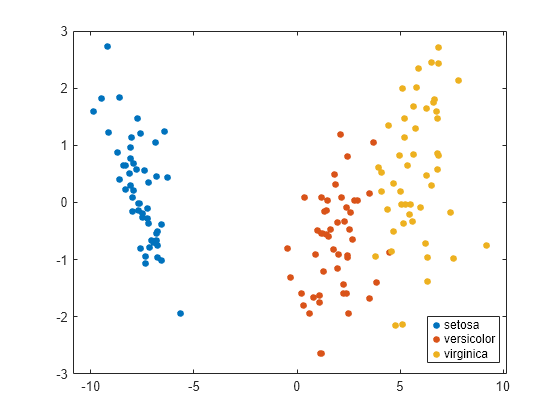manova1
One-way multivariate analysis of variance (MANOVA)
Description
Examples
Input Arguments
Output Arguments
More About
Algorithms
manova1 determines d by calculating a test
statistic for each possible value of d. The formula for the test
statistic is
where n is the number of observations, l is the number of factor levels, r is the number of response variables, and is Wilks' lambda. For more information about Wilks' lambda, see Multivariate Analysis of Variance for Repeated Measures.
The largest possible value of d is the minimum between the number of
response variables and one less than the number of factor levels. d is
the largest value for which the p-value is less than the significance
level specified by alpha.
Alternative Functionality
Instead of using manova1, you can create a
manova object using the manova function,
and then use the barttest object
function to calculate the dimension of the space containing the group means. The advantages of
using the manova function include:
Support for two-way and N-way MANOVA
Table support for factor and response data
Additional properties of the
manovaobject, including those for the fitted MANOVA model coefficients, degrees of freedom for the error, and response covariance matrix
References
[1] Krzanowski, Wojtek. J. Principles of Multivariate Analysis: A User's Perspective. New York: Oxford University Press, 1988.
[2] Morrison, Donald F. Multivariate Statistical Methods. 2nd ed, McGraw-Hill, 1976.
Version History
Introduced before R2006a
